Photos of Life in Palu Six Months After the Deadly Tsunami
Credit to Author: Ian Morse| Date: Mon, 01 Apr 2019 10:54:50 +0000
For hundreds of thousands of people on Indonesia’s Sulawesi island, watching their home turn to rubble was only the beginning of a battle that will last years.
A tectonic shift last September ripped through the city and narrow horseshoe bay of Palu at a speed geologists rarely see. It collapsed hotels and houses and knocked out electricity and phone service before it turned neighborhoods into swirling mud pools and triggered a three-meter tsunami that cleared the coastline of life.
The search for survivors and dead bodies took days, but the National Search and Rescue Agency (Basarnas) was not able to locate everyone. Of the 4,402 people killed in the disaster, almost half are still missing or in mass graves.
Today, six months later, survivors are still waiting for the money tools to rebuild their lives. Each head of a household is supposed to receive a bank account with an amount based on the damage to their house, up to Rp 50 million ($3,500 USD), to rebuild. The law also demands the government provide 10,000 rupiah a day to each affected family for three months. But none of the families has seen this money yet.
The request for $180 million USD to rebuild houses hasn’t been answered by the central government. The government has missed its deadline to access required funds at least three times, and officials in Palu say they will likely need to extend the emergency period for the fourth time next month. Meanwhile, Palu residents are looking for ways to keep their heads above water.
“Instead of dwelling on the memories of the tsunami, getting headaches and stress, thinking about all of my property that was lost, I paint,” says 57-year-old Abdullah Logata from his stale-white temporary shelter surrounded by coconut trees. He says he’s embarrassed to call himself a painter, but once a week, he sits down to paint shelters and the tsunami that crumbled his home.
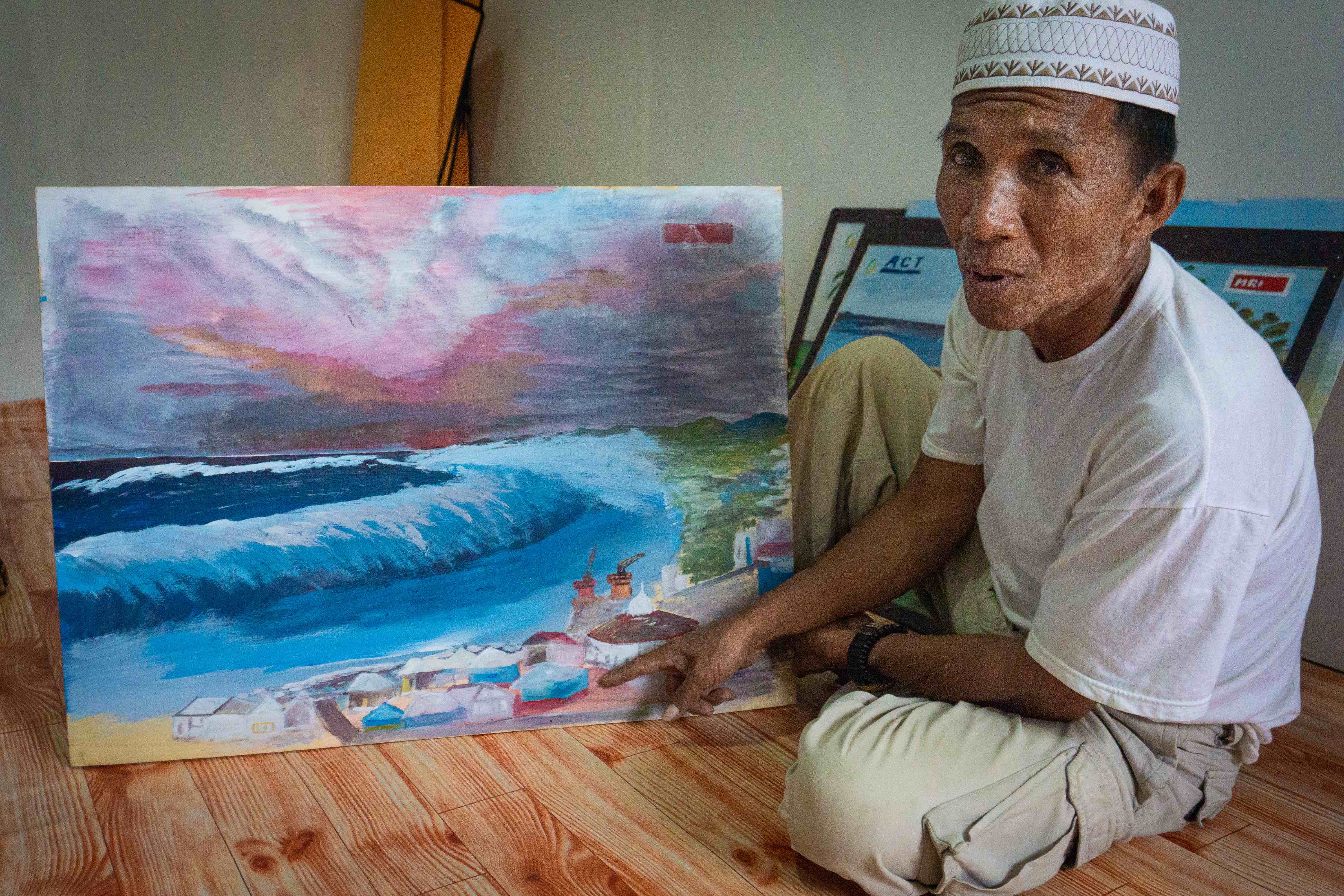
It helps him deal with the trauma and lack of income, he says, even though the tsunami painting has tested his sanity. “Many people told me not to paint that because we’re still traumatized,” he says. “I told them it won’t stay in Indonesia. I’ll send it outside the country.”
All over Central Sulawesi, survivors are inventing ways to cope with trauma, make a bit of money, and spend the time waiting for new homes. The government remains optimistic that everyone who needs a new home will have one in two years.
“Temporary shelters are designed to last two years, but we are still optimistic that people won’t wait longer than two years,” said Arie Setiadi Moerwanto, the infrastructure task force lead (Satgas PUPR).
But that’s a long time to live in instability.
“The water is who we are and what we know,” says Nandi, 45, whose house was leveled by the water he fished. Around him, people cheer on meter-long sailboats that race in the shadow of the building that used to be the famous Hotel Mercure.
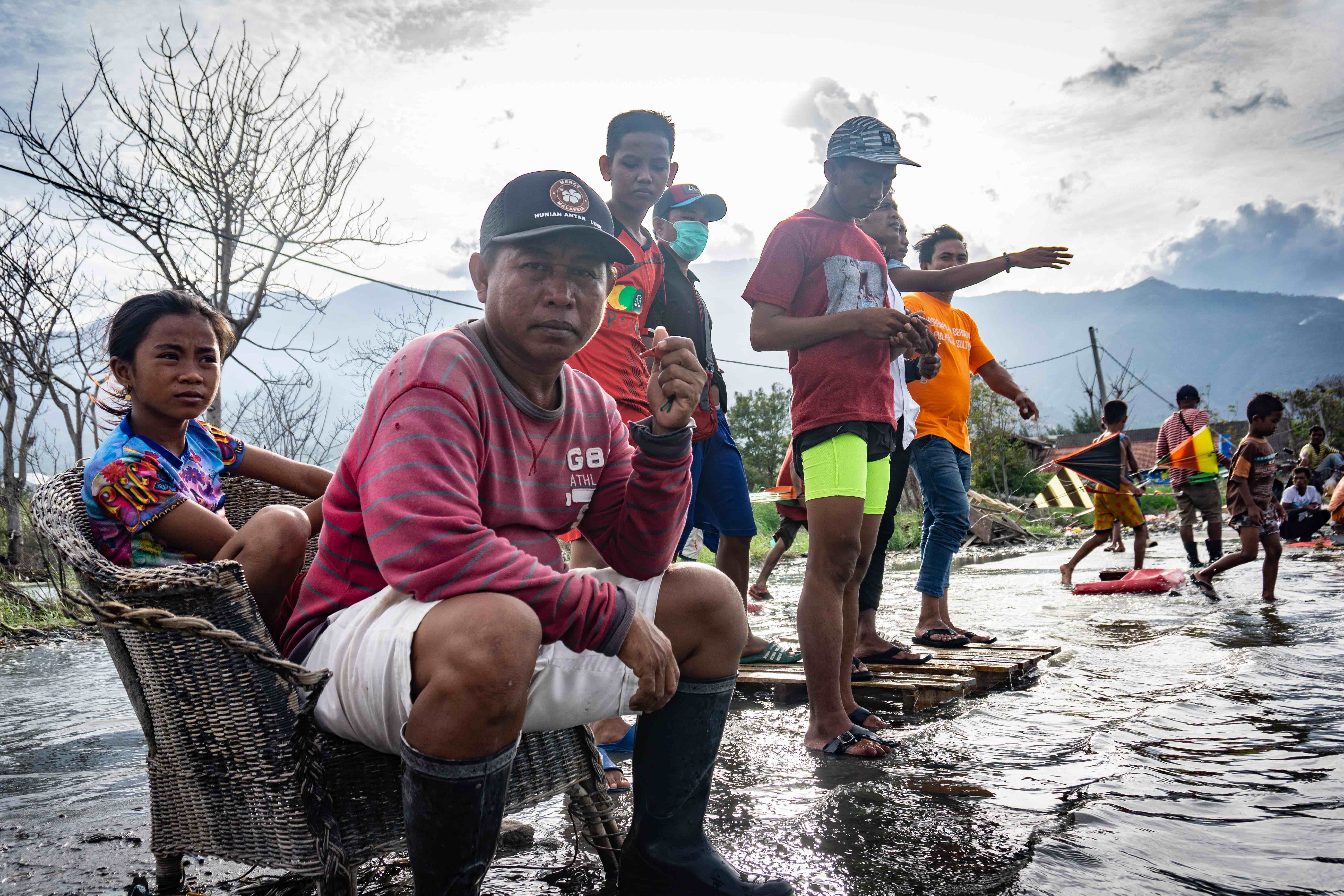
Nandi and 200 other families who lived on Palu’s coasts now live in tents less than 500 meters from the coast. Every afternoon for the last two months, Nandi has organized 20 racers and about 100 viewers to revive an adapted form of Palu’s annual sailboat races.
They’ve sized it down to fit their negligible income and available materials of mostly trash and wreckage from buildings around them. But they’ve sized it up to fit their daily craving for excitement. I ask Nandi what he’s heard from the government about being relocated or receiving compensation.
“Nothing. We don’t know where they are,” he says.
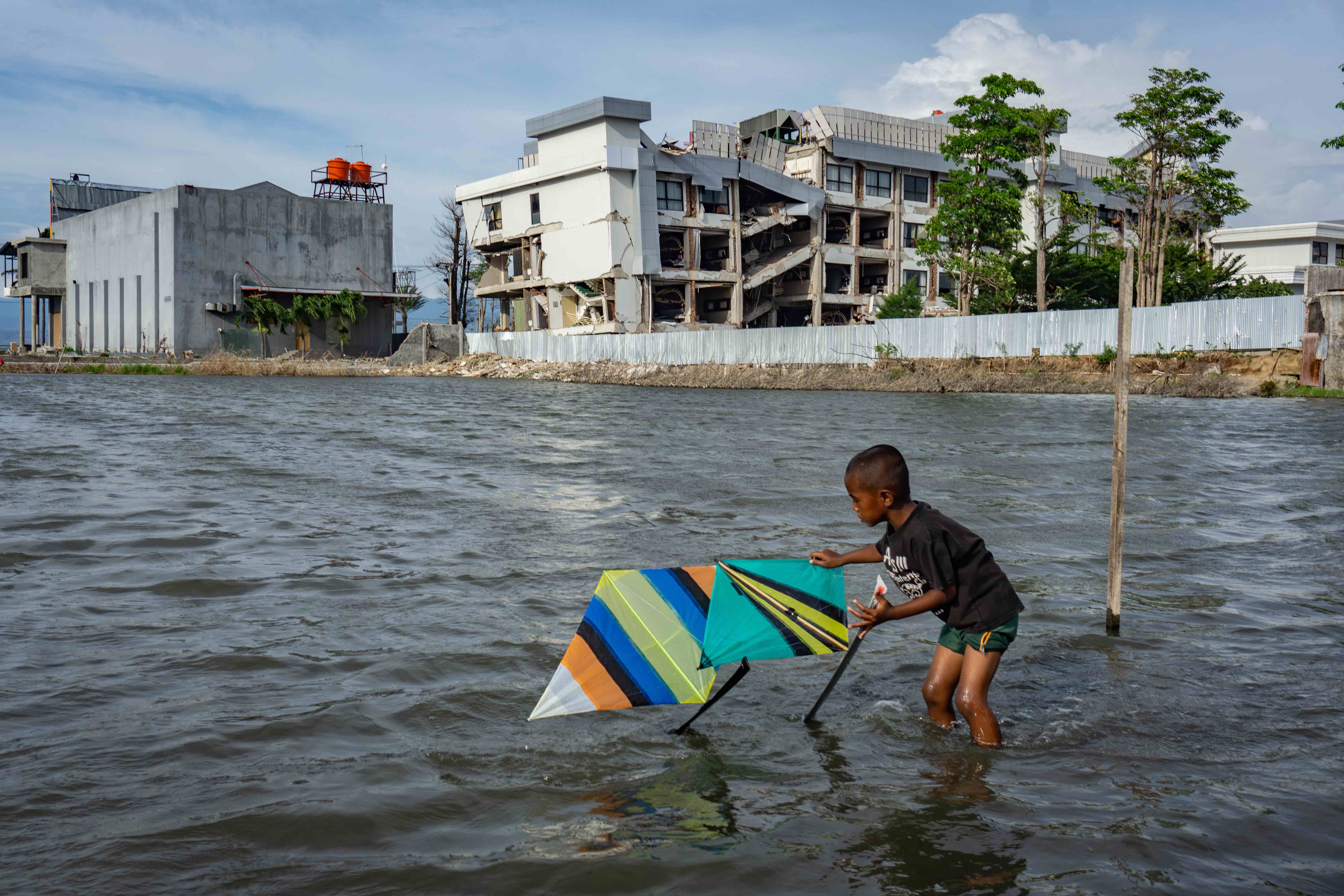
According to plans by the government, people living on the coast and the areas affected by liquefaction areas will be relocated to other parts of the city, often far from jobs and family.
Merti, 45, lives with her sisters in a tent run by the Indonesian Red Cross (PMI) in the outskirts of Palu. On Saturday nights, she hosts a party in the shelter where people living in the other 117 tents come out and dance together.
Merlin, 41, and her extended family were lucky enough to collect enough wood planks from the ruins of liquefied areas to create shelters that didn’t blow away with the wind. “I will always live in Petobo as long as there are other Petobo natives in Petobo,” she says, asking why she must move far away to find permanent shelter and compensation.
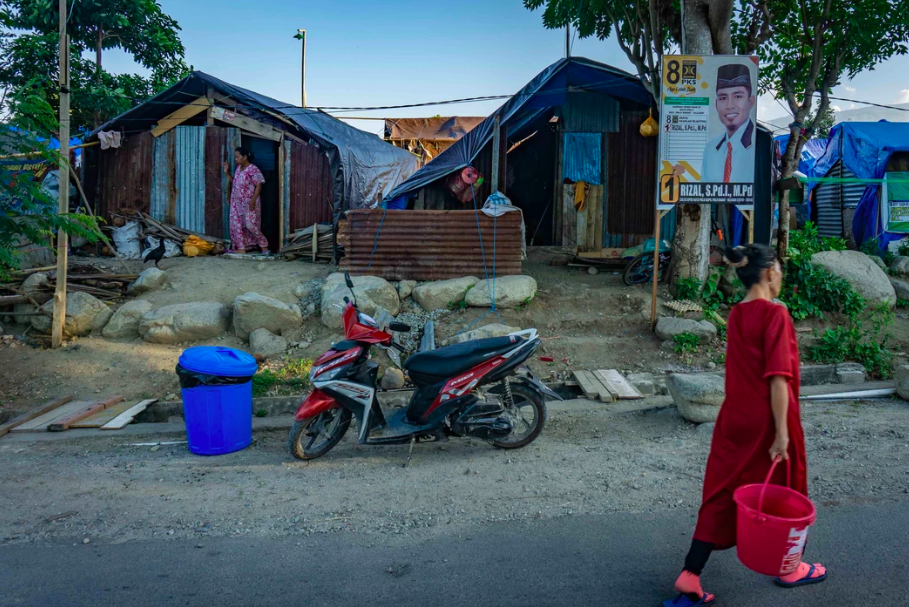
“I’m from a family of artists, my sister is a song writer, there are dance creators,” Merti says, drenched in sweat and out of breath after leading dances for an hour and a half. Merti complains of respiratory infections from the dusty ground, and like Nandi, she has received no information on when they can move into the temporary shelters. “My status on Facebook is ‘I will live my life in these tents,’” she says.
Those living in temporary shelters are in the minority. Of the hundreds of thousands displaced, the majority are staying with friends or family or in cramped tents they created with tarpaulin and wood planks in the days after the quake.
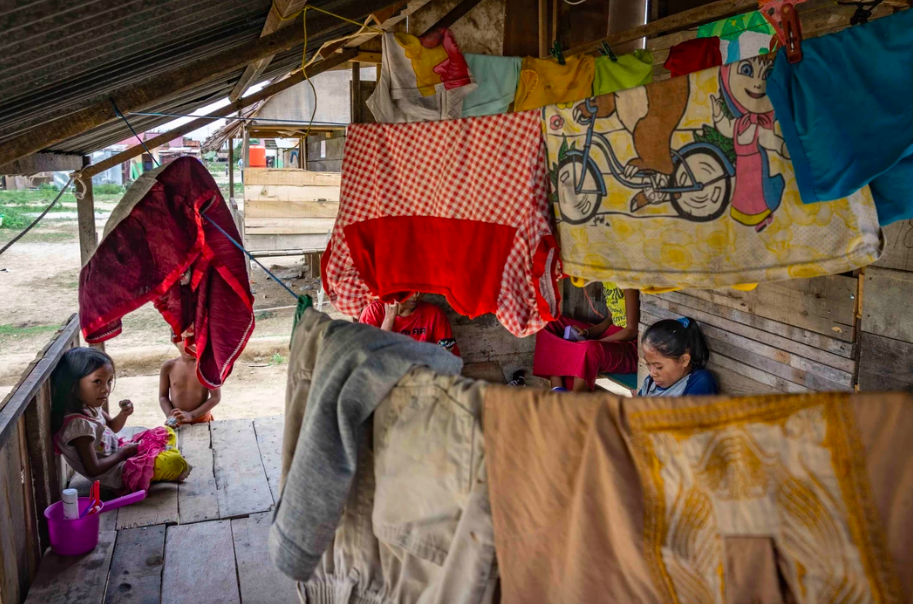
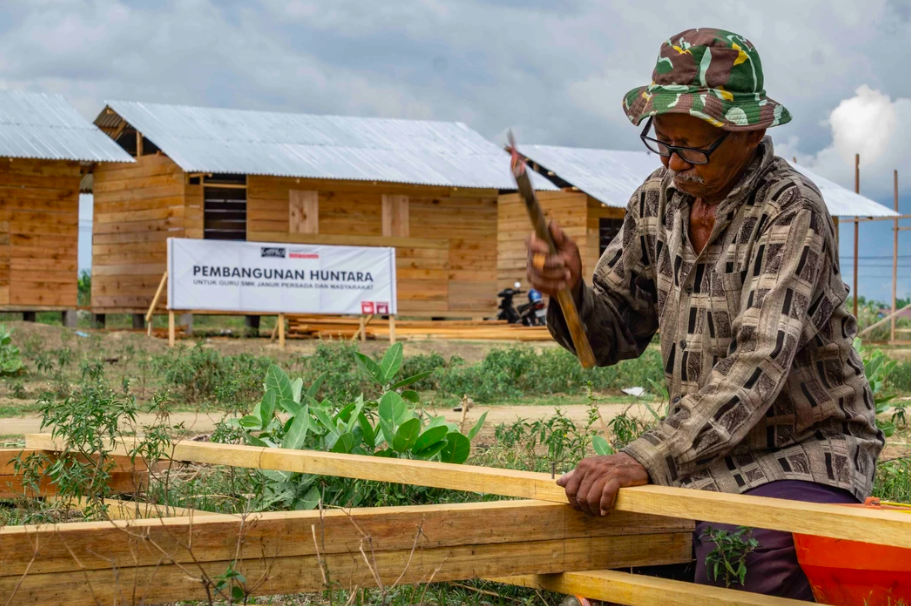
In Balaroa, another liquefaction area, residents continue to scavenge the remains of their homes for building materials. Fadli, 29, has been looking for rocks the size of his head to support a new foundation for his house at the top of a 15-meter cliff created when the neighborhood leveled itself like liquid in a glass.
“If we wait for the government, who knows who long we’ll have to wait,” he says. Only those who had land, money and connections began rebuilding themselves or fled to Makassar. Most are left waiting or taking recovery into their own hands. A sign where remains and mud have piled up downhill reads, “Do not dig or take wood or roofing, etc. We still need our what is ours. Listen when you’re told.”
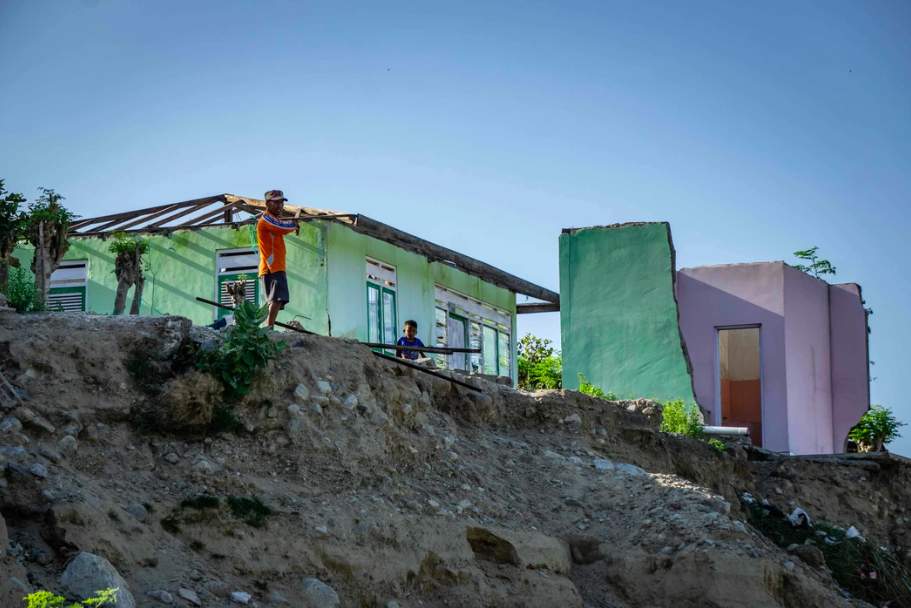
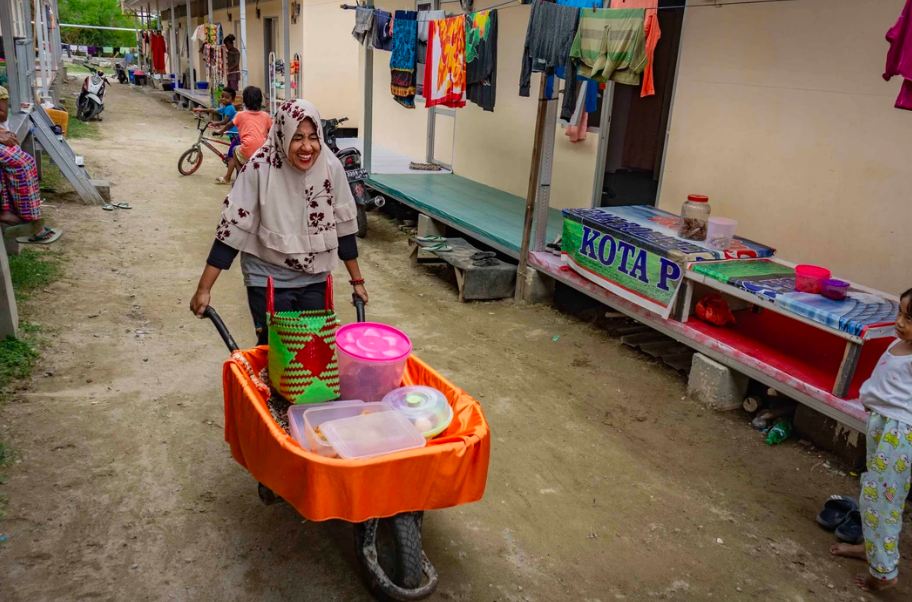
Adriah, 38, has struggled to pay her children’s school fees and food since she was widowed by the tsunami. She used a cash donation from an NGO to buy a wheelbarrow and the capital to buy baking ingredients.
Now, every morning, she wakes up at 3 and bakes until sunrise. She wakes up her neighbors, yelling, “Cakes! Cookies!” She repeats the process in the afternoon and estimates she can make $2 USD in a day. She tells me she doesn’t want to talk about her husband.
“We just have to keep looking forward,” she says.
This article originally appeared on VICE ASIA.